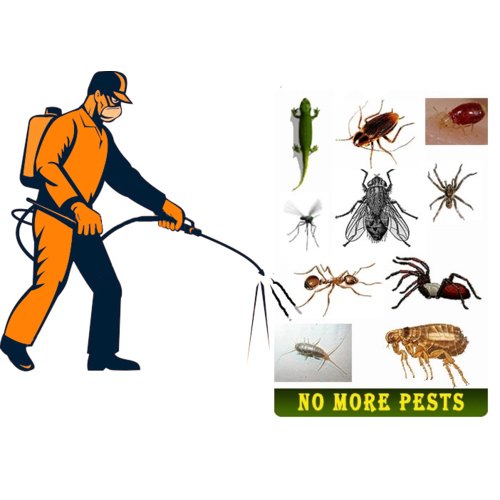Exploring Invasion and Treatment Approaches in the World of Parasite Control
The landscape of insect control encompasses a myriad of obstacles, specifically as infestations of typical household pests remain to advance. Understanding the actions and reproductive patterns of these annoyances is essential for developing effective treatment techniques. By integrating safety nets with innovative monitoring techniques, such as Integrated Pest Management (IPM), home owners can better safeguard their environments. The effectiveness of these approaches may differ significantly based on particular conditions. What underlying aspects add to the success or failing of these techniques in different settings?

Common Family Vermin
When it comes to managing our space, recognizing usual household insects is critical. These insects not only disrupt our convenience however can additionally posture health risks and damage building. The most prevalent household pests include ants, cockroaches, rodents, termites, and bed bugs.
Ants, frequently seen foraging in kitchens, can contaminate food and develop huge nests. Rodents, consisting of computer mice and rats, can cause structural damages and bring illness like hantavirus and salmonella.
Recognizing the indicators of these bugs, such as droppings, nests, or bite marks, is important for very early treatment (Pest Control Lockhart). Proper hygiene methods, sealing access points, and maintaining a clutter-free setting are efficient preventative measures. By recognizing these typical house bugs and comprehending their behaviors, house owners can take proactive actions to reduce problems, making sure a much healthier living atmosphere
Understanding Parasite Infestations
Pest infestations can intensify swiftly, transforming a small annoyance into a considerable issue if not addressed promptly. Typical aspects adding to problems consist of poor sanitation, structural susceptabilities, and seasonal changes that drive insects inside your home.
Determining the kind of bug is essential, as various varieties exhibit diverse behaviors and reproductive rates. For instance, rodents might establish nests in concealed locations while pests like roaches grow in wet settings. Early detection frequently depends upon recognizing indicators such as droppings, munch marks, or uncommon noises, which can suggest an issue before it becomes extreme.
Ecological conditions also play a vital duty in parasite expansion. Warm, humid environments can promote the fast growth of pest populaces, while modifications in landscaping or building and construction can accidentally produce conducive settings. Routine inspections and preventative actions are vital to mitigating the threat of infestations. An enlightened method to recognizing these dynamics lays the foundation for efficient pest administration strategies in the future.
Therapy Approaches and Methods
Effective therapy approaches and methods are vital for minimizing insect invasions and recovering a safe atmosphere. A complex approach is typically best, including chemical, biological, and mechanical approaches tailored to the particular bug and the extent of the infestation.
Chemical treatments include making use of pesticides and herbicides, which can efficiently remove pests. Proper application and adherence to security guidelines are important to lessen dangers to people and non-target microorganisms. Integrated Bug Monitoring (IPM) urges the wise usage of chemicals as a last hope, counting rather on surveillance and limit degrees to figure out treatment requirements.
Organic control techniques involve presenting all-natural predators or bloodsuckers to minimize insect populaces. This strategy is progressively prominent, particularly in farming settings, as it advertises environmental sustainability.
Mechanical methods, such as catches and barriers, provide instant remedy for pests without presenting chemicals. Options consist of sticky traps for pests or physical barriers for rats.
Eventually, the choice of therapy method need to think about the specific bug, the environment, and possible impacts on human wellness and communities. A well balanced combination of these approaches can successfully take care of invasions while advertising long-term bug control solutions.
Safety Nets for House
Proactively addressing bug concerns before they intensify is vital for preserving a healthy and balanced home environment (Pest Control Lockhart). Executing reliable safety nets can significantly decrease the probability of problems, ultimately securing both your residential or commercial property and wellness

Proper landscaping also plays an important function in avoidance. Maintaining hedges and trees cut away from your house reduces the chances of parasites locating their method inside. Additionally, guarantee that water drainage systems are working successfully to avoid standing water, which can reel in insects and other insects.
Finally, regular assessments are advisable. Routinely checking for indicators of parasite activity allows for very early treatment. By embracing these preventative procedures, property owners can create a setting that is much less congenial to parasites, consequently improving their overall lifestyle and minimizing the need for extensive parasite control interventions.
Business Bug Control Techniques
A thorough technique to commercial parasite control is vital for businesses intending to maintain a secure and hygienic view it atmosphere. Effective methods involve a mix of regular assessments, employee training, and the application of Integrated Pest Administration (IPM) practices.
Routine examinations allow very early detection of bug task, permitting prompt treatment. Services should create a regular schedule for these assessments, concentrating on risky areas such as kitchen areas, storeroom, and garbage disposal websites. Staff member training is equally important; personnel should be enlightened on the indications of bug invasions and the value of reporting them promptly.
Executing IPM techniques aids minimize bug problems sustainably. This includes environment adjustment, such as sealing access factors and minimizing mess, along with utilizing natural deterrents before considering chemical treatments.

In addition, working together with a qualified parasite control supplier guarantees access to specialist understanding and sophisticated therapy options. This partnership can cause personalized bug control prepares customized to the specific needs of the business, reducing threats and enhancing total effectiveness. have a peek at this website Ultimately, a positive and informed method promotes a pest-free setting, protecting both public health and wellness and service credibility.
Conclusion
In final thought, efficient insect control demands an extensive understanding of typical family insects and their habits, coupled with targeted therapy methods. Applying preventive steps along with treatment methods such as Integrated Parasite Management and organic control boosts the ability to reduce infestations.
Comments on “Trust Pest Control Lockhart for Durable Pest Prevention”